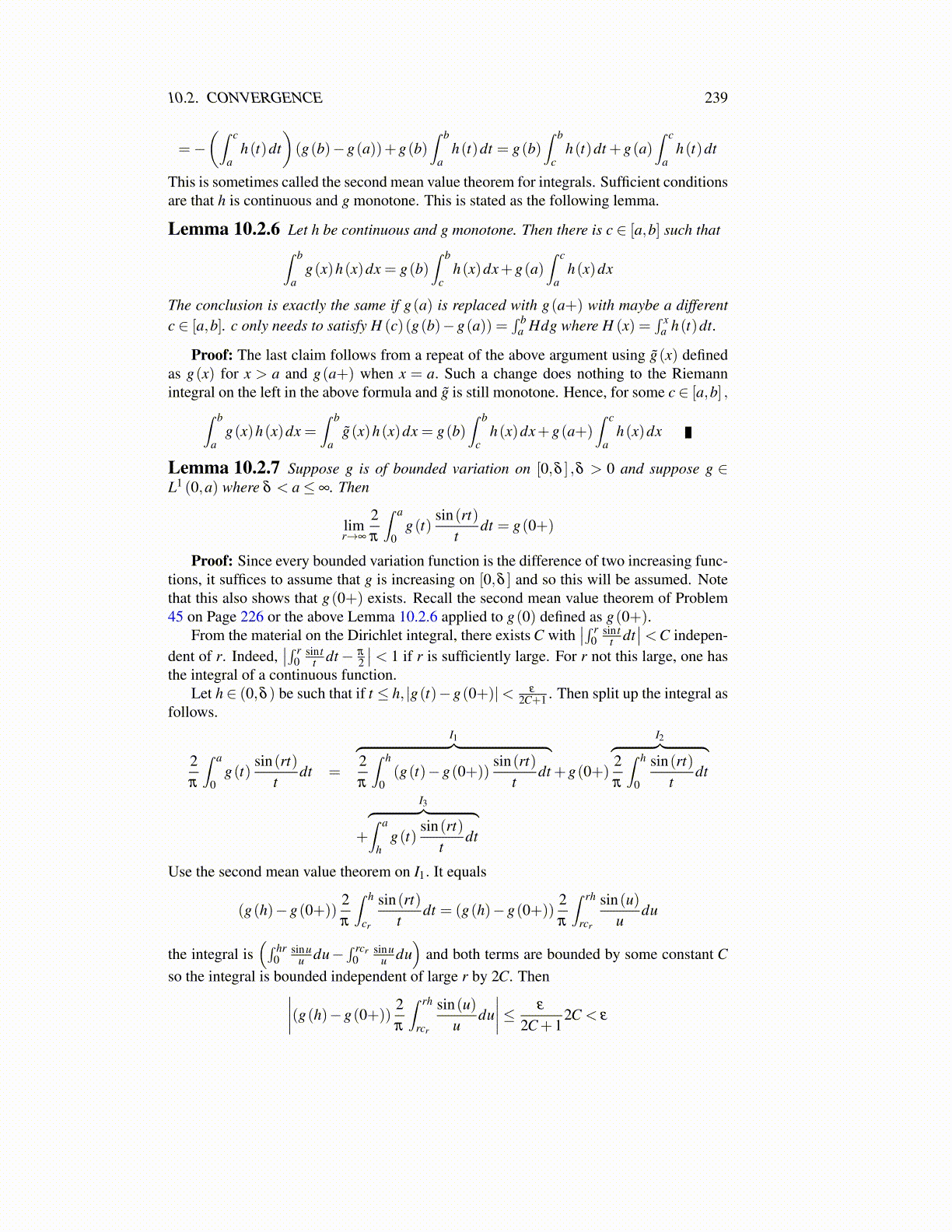
10.4. LAPLACE TRANSFORMS 239
Now it is defined that 0! = 1 and so Γ(1) = 0!. Suppose that Γ(n+1) = n!, what ofΓ(n+2)? Is it (n+1)!? if so, then by induction, the proposition is established. From whatwas just shown, Γ(n+2) = Γ(n+1)(n+1) = n!(n+1) = (n+1)! and so this proves theproposition.
The properties of the gamma function also allow for a fairly easy proof about differen-tiating under the integral in a Laplace transform. First is a definition.
Definition 10.3.4 A function φ has exponential growth on [0,∞) if there are posi-tive constants λ ,C such that |φ (t)| ≤Ceλ t for all t ≥ 0.
Theorem 10.3.5 Let f (s) =∫
∞
0 e−stφ (t)dt where t → φ (t)e−st is improper Rie-mann integrable for all s large enough and φ has exponential growth, |φ (t)| ≤Ceλ t . Thenfor s large enough, f (k) (s) exists and equals
∫∞
0 (−t)k e−stφ (t)dt.
Proof: Suppose true for some k ≥ 0. By definition it is so for k = 0. Then alwaysassuming s > λ , |h|< s−λ , where |φ (t)| ≤Ceλ t ,λ ≥ 0,
f (k) (s+h)− f (k) (s)h
=∫
∞
0(−t)k e−(s+h)t − e−st
hφ (t)dt
=∫
∞
0(−t)k e−st
(e−ht −1
h
)φ (t)dt =
∫∞
0(−t)k e−st
((−t)eθ(h,t)
)φ (t)dt
where θ (h, t) is between −ht and 0, this by the mean value theorem. Thus by mean valuetheorem again, ∣∣∣∣∣ f (k) (s+h)− f (k) (s)
h−∫
∞
0(−t)k+1 e−st
φ (t)dt
∣∣∣∣∣≤∫
∞
0|t|k+1 Ceλ te−st
∣∣∣eθ(h,t)−1∣∣∣dt ≤
∫∞
0tk+1Ceλ te−steα(h,t) |ht|dt
≤∫
∞
0tk+2Ceλ te−st |h|et|h|dt =C |h|
∫∞
0tk+2e−(s−(λ+|h|))tdt
Let u = (s− (λ + |h|)) t,du = (s− (λ + |h|))dt and changing the variable, you see thatthe right side converges to 0 as h→ 0 so f (k+1) (t) has the correct form. This proves thetheorem.
The function f (s) just defined is called the Laplace transform of φ .Incidentally, f (k) (s) exists for each k and s ∈C with Re(s)> λ by the same argument.
This will be used later when the computation of inverse Laplace transforms is considered.
10.4 Laplace TransformsIt will be assumed here that t→ f (t)e−st is in L1 (0,∞) for all s large enough.
Definition 10.4.1 We say that a function defined on [0,∞) has exponential growthif for some λ ≥ 0, and C > 0, | f (t)| ≤Ceλ t .
Note that this condition is satisfied if | f (t)| ≤ a+beλ t . You simply pick C > max(a,b)and observe that a+beλ t ≤ 2Ceλ t .